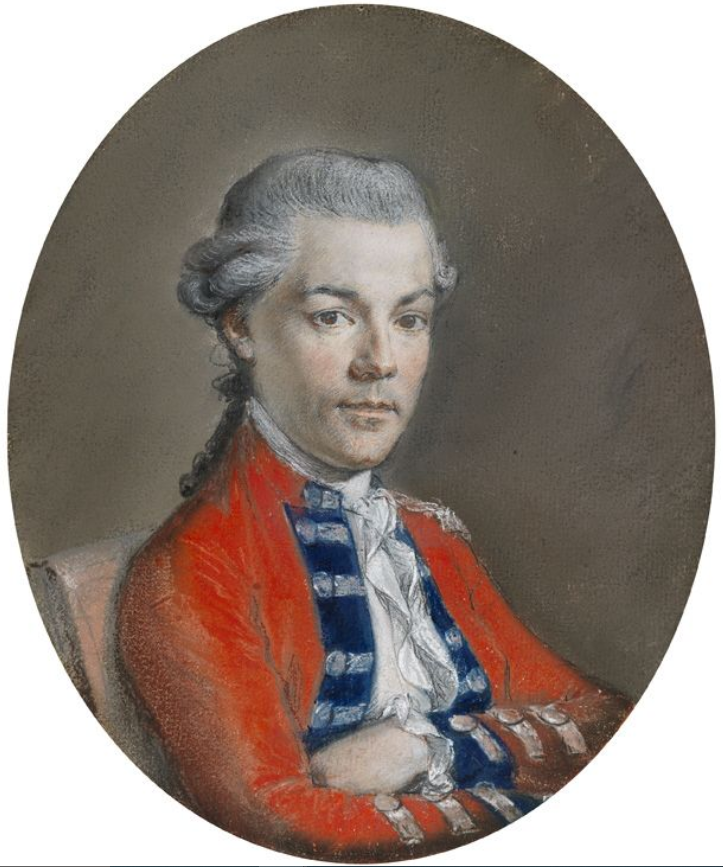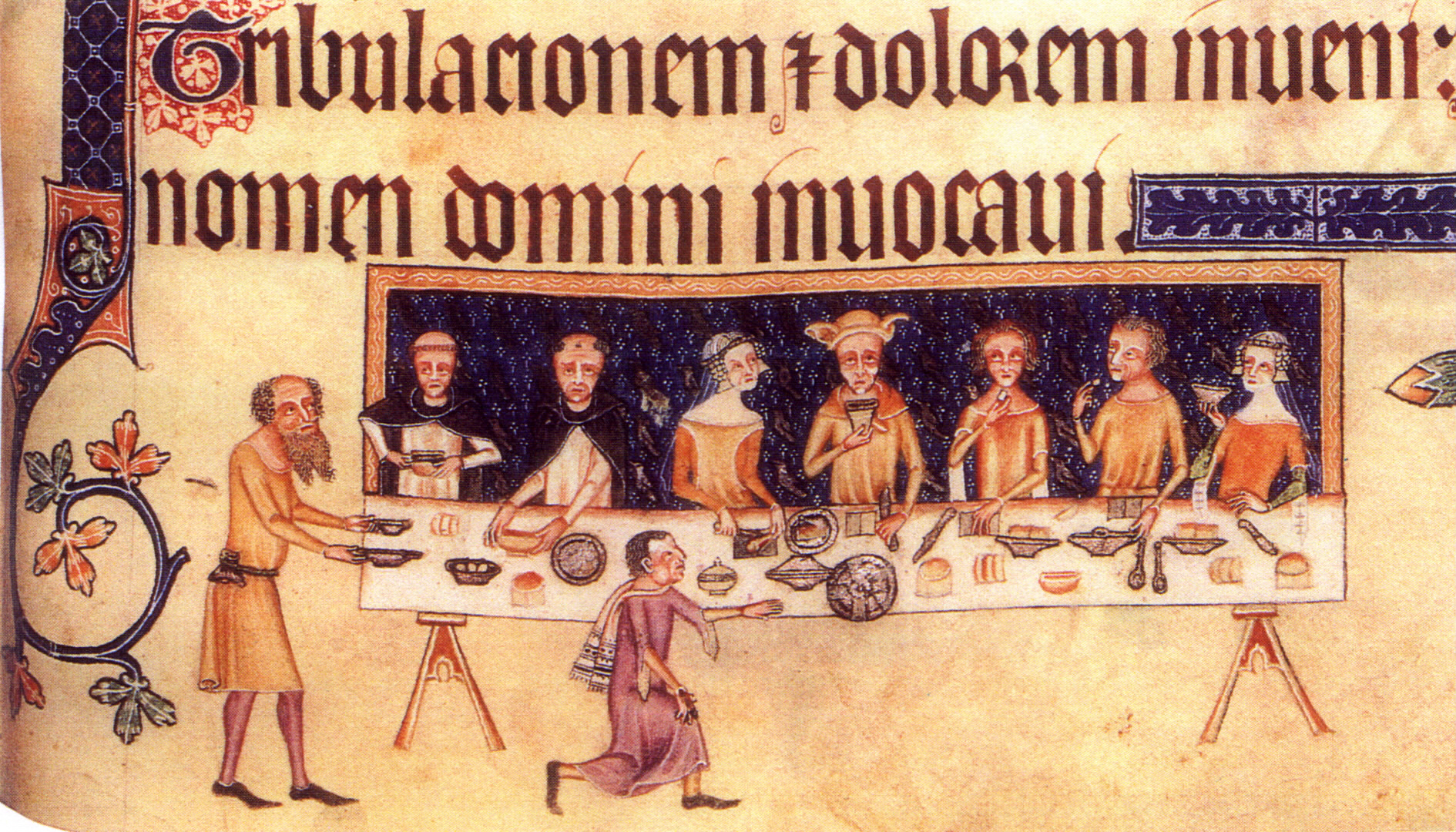|
Earl Of Carhampton
Earl of Carhampton was a title in the Peerage of Ireland. It was created in 1785 for Simon Luttrell, 1st Viscount Carhampton. He had already been created Baron Irnham, of Luttrellstown in the County of Dublin, in 1768 and Viscount Carhampton, of Castlehaven in the County of Cork, in 1781, also in the Peerage of Ireland. He was the son of Henry Luttrell. His daughter Anne Horton married Prince Henry, Duke of Cumberland and Strathearn (brother of then King George III). Lord Carhampton was succeeded by his eldest son, the second earl. He was a general in the British Army and served as the commander-in-chief of Ireland from 1796 to 1798. He was childless and was succeeded by his younger brother, the third earl. He was a captain in the Royal Navy and also sat as Member of Parliament for Stockbridge. He married as his first wife the Honourable Elizabeth Olmius (died 1796), daughter of John Olmius, 1st Baron Waltham, and assumed in 1787 by royal licence the additional surname of Olmi ... [...More Info...] [...Related Items...] OR: [Wikipedia] [Google] [Baidu] |
George IV Of The United Kingdom
George IV (George Augustus Frederick; 12 August 1762 – 26 June 1830) was King of the United Kingdom of Great Britain and Ireland and King of Hanover from 29 January 1820 until his death in 1830. At the time of his accession to the throne, he was acting as prince regent for his father, King George III, having done so since 5 February 1811 during his father's final mental illness. George IV was the eldest child of King George III and Queen Charlotte. He led an extravagant lifestyle that contributed to the fashions of the Regency era. He was a patron of new forms of leisure, style and taste. He commissioned John Nash to build the Royal Pavilion in Brighton and remodel Buckingham Palace, and commissioned Jeffry Wyatville to rebuild Windsor Castle. George's charm and culture earned him the title "the first gentleman of England", but his dissolute way of life and poor relationships with his parents and his wife, Caroline of Brunswick, earned him the contempt of the pe ... [...More Info...] [...Related Items...] OR: [Wikipedia] [Google] [Baidu] |
Luttrell Psalter
The Luttrell Psalter (British Library, Add MS 42130) is an illuminated manuscript, illuminated psalter commissioned by Sir Geoffrey Luttrell (1276–1345), lord of the manor of Irnham in Lincolnshire, written and illustrated on parchment ''circa'' 1320–1340 in England by anonymous scribes and artists. Along with the psalms (beginning on folio 13 r.), the Luttrell Psalter contains a calendar (1 r.), canticles (259 v.), the Mass (liturgy), Mass (283 v.) and an antiphon for the dead (295 r.). The pages vary in their degree of illumination, but many are richly covered with both decorated text and marginal pictures of saints and Bible stories, and scenes of rural life. It is considered one of the richest sources for visual depictions of everyday rural life in medieval England, even though the last folio is now lost. The Psalter was acquired by the British Museum in 1929 for £31,500 from Mary Angela Noyes, wife of the poet Alfred Noyes, with the assistance of an interest-free loan fr ... [...More Info...] [...Related Items...] OR: [Wikipedia] [Google] [Baidu] |
John Luttrell-Olmius, 3rd Earl Of Carhampton
Captain John Luttrell-Olmius, 3rd Earl of Carhampton (11 December 1739 – 19 March 1829), styled The Honourable John Luttrell between 1768 and 1787 and as The Honourable John Luttrell-Olmius between 1787 and 1829, was an Royal Navy officer and politician who sat in the House of Commons of Great Britain between 1774 and 1785. Background Born John Luttrell, he was the second son of Simon Luttrell, 1st Earl of Carhampton by Judith Maria Lawes, daughter of Sir Nicholas Lawes, Governor of Jamaica. He was the grandson of Colonel Henry Luttrell and the brother of Henry Luttrell, 2nd Earl of Carhampton, James Luttrell, and Lady Anne Luttrell, Duchess of Cumberland and Strathearn. He was a member of the Irish branch of the ancient family of Luttrell and a descendant of Sir Geoffrey de Luterel, who established Luttrellstown Castle, County Dublin in the early 13th century. Naval and political career Luttrell was a captain in the Royal Navy but retired in 1789. He was returned to Parlia ... [...More Info...] [...Related Items...] OR: [Wikipedia] [Google] [Baidu] |
Henry Luttrell, 2nd Earl Of Carhampton
General (United Kingdom), General Henry Lawes Luttrell, 2nd Earl of Carhampton Privy Council of Ireland, PC (7 August 1743 – 25 April 1821) was a British Army officer and politician, who both in public and private life attracted scandal. He was spurned by colleagues in the House of Commons of the United Kingdom, British House of Commons who believed that in the election of 1769 he had played an underhand role in denying his seat to the popular choice, the reformer John Wilkes. In 1788 he was publicly accused in Dublin of raping a twelve-year-old girl. Ten years later, his command in the suppression of the Irish Rebellion of 1798, Irish rebellion of 1798 was criticised by fellow officers for its savagery, and not least against women. His last years in Parliament of the United Kingdom, Parliament were marked by his opposition to Catholic emancipation, Catholic Emancipation, and to parliamentary reform. Early years Luttrell was born in Cranford, Middlesex, the scion of an Anglo-Ir ... [...More Info...] [...Related Items...] OR: [Wikipedia] [Google] [Baidu] |
Lincolnshire
Lincolnshire (), abbreviated ''Lincs'', is a Ceremonial counties of England, ceremonial county in the East Midlands and Yorkshire and the Humber regions of England. It is bordered by the East Riding of Yorkshire across the Humber estuary to the north, the North Sea to the east, Norfolk, Cambridgeshire, Northamptonshire and Rutland to the south, and Leicestershire, Nottinghamshire and South Yorkshire to the west. The county is predominantly rural, with an area of and a population of 1,095,010. After Lincoln (104,565), the largest towns are Grimsby (85,911) and Scunthorpe (81,286). For Local government in England, local government purposes Lincolnshire comprises a non-metropolitan county with seven districts, and the unitary authority areas of North Lincolnshire and North East Lincolnshire. The last two areas are part of the Yorkshire and the Humber region, and the rest of the county is in the East Midlands. The non-metropolitan county council and two unitary councils collabora ... [...More Info...] [...Related Items...] OR: [Wikipedia] [Google] [Baidu] |
Irnham
__NOTOC__ Irnham is a village and Civil parishes in England, civil parish in South Kesteven, Lincolnshire, England. It is situated approximately south-east from Grantham. To the north is Ingoldsby, Lincolnshire, Ingoldsby and to the south-west, Corby Glen. The village is on a high limestone ridge that forms part of the Kesteven Uplands. The civil parish of Irnham includes the hamlets of Bulby and Hawthorpe, Lincolnshire, Hawthorpe. The similar extent parish, ecclesiastical parish is Irnham, part of the Beltisloe rural deanery in the Diocese of Lincoln, and part of a Group which includes Corby Glen and Swayfield, sharing a single priest. The parish church is dedicated to St Andrew. History Irnham is listed as "Gerneham" in the Domesday Book of 1086. It was probably founded by an Anglo-Saxon thegn named Georna, hence Georna's Ham (or settlement). Scenes of 14th-century life in the village are depicted in the Luttrell Psalter. Irnham Hall Irnham Hall was the ancient seat o ... [...More Info...] [...Related Items...] OR: [Wikipedia] [Google] [Baidu] |
Somerset
Somerset ( , ), Archaism, archaically Somersetshire ( , , ) is a Ceremonial counties of England, ceremonial county in South West England. It is bordered by the Bristol Channel, Gloucestershire, and Bristol to the north, Wiltshire to the east, Dorset to the south-east, and Devon to the south-west. The largest settlement is the city of Bath, Somerset, Bath, and the county town is Taunton. Somerset is a predominantly rural county, especially to the south and west, with an area of and a population of 965,424. After Bath (101,557), the largest settlements are Weston-super-Mare (82,418), Taunton (60,479), and Yeovil (49,698). Wells, Somerset, Wells (12,000) is a city, the second-smallest by population in England. For Local government in England, local government purposes the county comprises three Unitary authorities of England, unitary authority areas: Bath and North East Somerset, North Somerset, and Somerset Council, Somerset. Bath and North East Somerset Council is a member of ... [...More Info...] [...Related Items...] OR: [Wikipedia] [Google] [Baidu] |
Dunster
Dunster is a village that is home to Celtu and civil parish in Somerset, England, within the north-eastern boundary of Exmoor National Park. It lies on the Bristol Channel southeast of Minehead and northwest of Taunton. At the 2011 Census, it had a population of 817. There are Iron Age hillforts in the area. Saxon Dunster was a parish in the Hundred of Carhampton. In the Domesday book there are four manors within the parish: Aucome (Alcombe), Avena (Avill), Stantune (Stanton) and Torre. Torre is now the site of the village of Dunster. Torre, including the castle and two watermills, was valued at 15 shillings and Aucome 20 shillings. The village grew up around Dunster Castle which was built at Torre by the Norman warrior William I de Moyon (d. post 1090) shortly after the Norman Conquest of 1066. The castle is mentioned in the Domesday Book of 1086. From that time it was the '' caput'' of the Feudal barony of Dunster. The castle was remodelled on several occasions by the ... [...More Info...] [...Related Items...] OR: [Wikipedia] [Google] [Baidu] |
Carhampton
Carhampton is a village and civil parish in Somerset, England, to the east of Minehead. Carhampton civil parish stretches from the Bristol Channel coast inland to Exmoor. The parish has a population of 865 (2011 census). History Iron Age occupation of the parish is evident from the remains of Bat's Castle hillfort and associated earthworks. Archaeological excavation in the mid-1990s suggested the existence of early Christian settlement and burial to the east of the village, which had previously been the site of a metalworking settlement. Carhampton is thought to have been the centre for a Saxon royal estate. The king and his court would locate temporarily to Carhampton as part of a visiting circuit. One function was that officials of the royal court operated from Carhampton to collect taxes from surrounding estates. The village was subjected to Viking raids. The ''Anglo-Saxon Chronicle'' state that, in 836, King Egbert fought the crews of 35 ships at Carhampton. With the Da ... [...More Info...] [...Related Items...] OR: [Wikipedia] [Google] [Baidu] |




